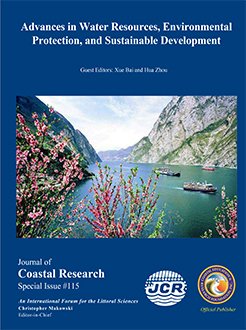Zhang, Y.; Chang, F.Q.; Duan, L.Z.; Wu, H., Zhang, H.C., 2020. The industrial pollution history inferred by stable Pb isotope in the chronological sedimentary record of a plateau lake, Yunnan Province, Southwestern of China. In: Bai, X. and Zhou, H. (eds.), Advances in Water Resources, Environmental Protection, and Sustainable Development. Journal of Coastal Research, Special Issue No. 115, pp. 641-647. Coconut Creek (Florida), ISSN 0749-0208.
Lake Yangzong, a plateau deep water lake, located in the in Yunnan Province where was the one of the most industrialized regions in China, was suffered seriously mining pollution threat in recent decades. In the present research, based on the 210Pb and 137Cs methods, the chronological sequence of the sediment record collected from the lake basin was established. Combined with the stable isotopic compositions, Pb content and geochemical enrichment index (Igeo), the background of industrial activities and anthropogenic lead (Pb) pollution history were investigated. These results revealed that pollution history could divided into four stages. The contribution of Pb was primarily affected by regional emissions since the open reforming period, and local metal production industries was more involved in the late 1990s. Furthermore, the regional pollution pathways of anthropogenic Pb were mainly affected by atmospheric precipitation and transportation, which were predominately related to mining consumption and smelting industry.





